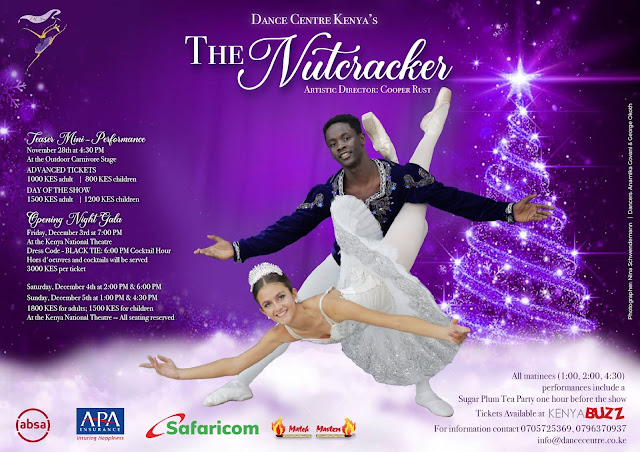TRILATERAL
TRIES TO TACKLE TOO MANY HOT TOPICS
By
Margaretta wa Gacheru (December 18, 2021
Nyakagwa
Mahaga is a courageous, young theatre group that staged their second
production, entitled Trilateral, last weekend at Kenya National
Theatre’s Ukumbi Mdogo.
Their
scriptwriter Adeti Mahaga is particularly ambitious, not only because she also
directed and produced this emotional drama. She also tried to address so many
hot topics in her script that it was a bit challenging to disentangle them to
see which themes were the most critical.
Only at the
end of the play does the underlying issue come to light. It not only
illuminated the title of the play, ‘Trilateral’ meaning ‘involving three
parties’, the three characters in the play who we have no idea until the very
end that their ‘association’ is far more intimate than is initially apparent.
The
revelation at the play’s end also allows us to make more sense as to why the
trio are all suicidal. There’s no clarity as to how they end up in a place
where a hangman’s noose has conveniently been hung. All we learn is that Falcon
(Smollo Andrew) is the one who hung the noose with the intent of finishing his
life. Then we meet Phoenix (Sonia Kahura), a young blind woman who has been
badly abused all her life by her mother and also feels it’s time to end things.
Finally,
there’s Maua (Julie Nasuju), who initially comes out looking cheeky and
slightly over-sexed. But then, she suddenly paints her face with white patches.
It doesn’t take long to learn what the ‘white face’ (as opposed to black face)
means. But now she has a different story from the pre-face-whitened girl. It’s
not clear how the patchy-faced person (who has a skin disease called vitiligo)
can be the same girl we originally meet. What is clear is that her condition is
a factor in her feeling suicidal. What is also clear is that Maua, like Falcon,
had her heart broken. In her case, the heartbreaker seduced and violated her
when she was still an innocent young girl. His abuse of her also plays a part
in her going for the noose and even fighting with Falcon to be first in line to
use the rope.
Suicide and
mental health are one theme of Mahaga’s play. But there are several others,
including issues associated with disability (Phoenix’s blindness and Maua’s
skin disease), unrequited love, gratuitous sex, abandonment and adoption, and
last but not least, incest.
The beauty
of the play is that all the themes are revealed as these characters, apparently
total strangers, tell their respective stories. And as far as suicide is
concerned, the issue is practically forgotten as they tell each other their emotional
(and sometimes sexually-charged) stories.
First comes
Falcon who wants to die because his future with the woman he loves, Rosie, has
been blocked by Rosie’s mum. Then in Shakespearean style, Rosie commits suicide,
leaving her lover to now try to follow suit. But before he can do it, he gets
attracted to Phoenix who is blind but still seductive.
The scene
where they practically have sex on stage is saved by Maua who interrupts this
slightly uncomfortable and nearly pornographic moment. Ironically, Maua also
wants to talk about her sexual exploits which include her disillusionment after
her first sexual encounter with some anonymous man. It would seem that all the
sexual language and provocative behavior in the play has significance related to
how their lives are intertwined.
What made
the play a challenge to watch was the frequent moments of inaudibility of some
of the actors who hadn’t been well coached in vocal projection. They were too
soft-spoken to the detriment of understanding the script.
As it turns
out, everything hinged on a crumpled letter that Maua is carrying. It’s not
clear who wrote it or how she got it. But when the other two read it (yes, even
the ‘blind’ Phoenix ‘reads’), they go bananas. And understandably so since they
are hearing for the first time that they are triples, born to the woman that
Phoenix calls her mother. One more confusion for me is that Phoenix’s mum is
also somehow the same mother who blocked Rosie’s relationship with Falcon. I
must have missed something here. But what I do know is that Rosie was also the mother’s
younger daughter, born sometime after the triples!
If this
final revelation sounds a bit far-fetched, (including Falcon’s having unknowingly
fallen in love with his little sis), it’s okay. Theatre often deals with
improbabilities!








